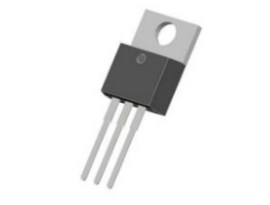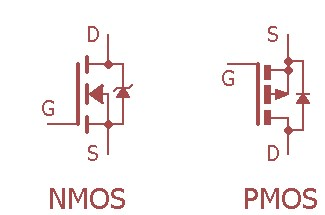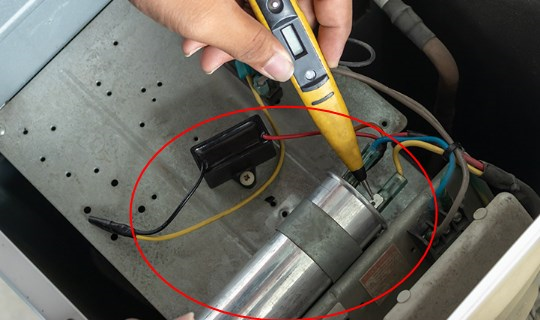If you're even remotely interested in electronics, you've likely encountered the enigmatic term "MOSFET." But what exactly is it? This guide aims to demystify the MOSFET, delving into its structure, applications, and selection process.
What is a MOSFET

A MOSFET, which stands for Metal-Oxide-Semiconductor Field-Effect Transistor, is a type of transistor widely used in electronics for switching and amplifying electronic signals. Here are some key points about MOSFETs:
Structure:
-
Metal-Oxide-Semiconductor (MOS) Structure: The MOSFET consists of a gate electrode (metal), an insulating layer of oxide (usually silicon dioxide), and a semiconductor material (often silicon).
-
Three Terminals: MOSFETs have three terminals: gate, source, and drain. The flow of current between the source and drain is controlled by the voltage applied to the gate terminal.
Operation Modes:
-
Cut-Off Mode: No current flows between the source and drain when the gate-source voltage (Vgs) is below a certain threshold voltage.
-
Linear (Triode) Mode: Current flows between the source and drain, and the current can be controlled by the gate voltage in this mode.
-
Saturation (Active) Mode: Here, the MOSFET operates as a voltage-controlled switch, with the device fully conducting between the source and drain.
Types of MOSFETs:
-
Enhancement-mode MOSFETs (E-MOSFET): These MOSFETs require a gate-source voltage to turn the device on.
-
Depletion-mode MOSFETs (D-MOSFET): These types are normally on but can be turned off by applying a gate-source voltage.
Applications:
-
Switching Applications: MOSFETs are commonly used for switching applications due to their high switching speed and efficiency.
-
Amplification: They are also used in amplifier circuits, especially in high-frequency applications.
-
Power Management: MOSFETs are vital components in power electronics, controlling power distribution and conversion efficiently.
Advantages:
-
High Input Impedance: MOSFETs have high input impedance, making them suitable for use in circuits where input impedance is a critical factor.
-
Efficiency: They offer high efficiency due to lower power dissipation compared to other transistor types like bipolar junction transistors (BJTs).
Conclusion:
MOSFETs are fundamental components in modern electronics due to their versatility, efficiency, and high performance. Understanding their structure, operation modes, types, applications, and advantages can help in utilizing them effectively in various electronic circuits and systems.

Structures of MOSFET
MOSFETs (Metal-Oxide-Semiconductor Field-Effect Transistors) come in various structures designed for different applications. Here are the common structures of MOSFETs:
1. Planar MOSFET:
- Surface Channel MOSFET: In this structure, the channel is created near the surface of the semiconductor substrate.
- Oxide Layer: A thin insulating layer of silicon dioxide serves as the gate dielectric.
- Metal Gate: The gate electrode is typically made of metal.
- Substrate: The substrate can be p-type or n-type silicon. For NMOS (n-channel MOSFET), the substrate is p-type, while for PMOS (p-channel MOSFET), the substrate is n-type.
2. Vertical MOSFET:
- Trench MOSFET: In this structure, the MOSFET is constructed vertically in trenches in the silicon substrate rather than on the surface.
- Gate Electrode: The gate electrode wraps around the trench, providing better control over the channel.
- Reduced Size: Trench MOSFETs can be scaled down effectively, making them useful for high-density integrated circuits.
3. FinFET (Fin Field-Effect Transistor):
- 3D Structure: FinFETs are designed with a fin structure that extends above the substrate, providing better electrostatic control of the channel.
- Improved Performance: FinFETs offer improved performance in terms of speed, power consumption, and scalability compared to planar MOSFETs.
- Used in Advanced Nodes: FinFETs are commonly used in advanced semiconductor nodes due to their superior electrostatic control.
4. SOI (Silicon-On-Insulator) MOSFET:
- Silicon-On-Insulator: In SOI MOSFETs, the transistor is built on a thin layer of silicon on top of an insulating substrate, such as silicon dioxide.
- Reduction in Parasitic Capacitance: SOI technology helps reduce parasitic capacitance effects, enhancing transistor performance.
- Improved Speed and Power Efficiency: SOI MOSFETs offer improved speed and power efficiency compared to bulk silicon MOSFETs.
5. Double-Gate MOSFET:
- Dual-Gate Structure: Double-gate MOSFETs feature two gates controlling the channel, providing better electrostatic control.
- Improved Performance: Double-gate MOSFETs offer improved short-channel control, reduced leakage, and increased performance compared to traditional MOSFET structures.
- Common in Nanoscale Technologies: These transistors are commonly used in nanoscale technologies to overcome limitations of scaling traditional transistors.
Understanding these different MOSFET structures is crucial for designing and implementing efficient and high-performance transistor-based circuits in various electronic applications. Each structure has its unique characteristics and advantages, making them suitable for specific requirements in semiconductor device design and fabrication.

Applications of MOSFET
MOSFETs (Metal-Oxide-Semiconductor Field-Effect Transistors) have a wide range of applications across various industries due to their efficiency, performance, and versatility. Here are some common applications of MOSFETs:
1. Switching Applications:
- MOSFETs are widely used as switches in electronic circuits due to their fast switching speeds, low ON resistance, and high efficiency.
- Applications include power supplies, DC-DC converters, motor control, LED lighting, and solar inverters.
2. Amplification:
- MOSFETs can be used in amplifier circuits, especially in radio frequency (RF) applications, due to their high input impedance and low noise characteristics.
- They are commonly used in audio amplifiers, RF amplifiers, and instrumentation circuits.
3. Power Electronics:
- MOSFETs play a vital role in power electronic applications such as voltage regulation, power conversion, and motor control due to their high power handling capabilities and efficiency.
- Applications include power inverters, motor drives, uninterruptible power supplies (UPS), and switched-mode power supplies (SMPS).
4. Analog Switches:
- MOSFETs are used in analog switch applications to selectively route analog signals in electronic systems.
- They are utilized in audio and video switches, data acquisition systems, and communication equipment.
5. Digital Circuits:
- MOSFETs are key components in digital integrated circuits (ICs) like microprocessors, memory devices, and logic gates.
- They are employed in digital signal processing (DSP) applications, memory storage, and data processing systems.
6. Radio Frequency (RF) Transmitters and Receivers:
- MOSFETs are used in RF transmitters and receivers for wireless communication systems due to their high-frequency performance and low noise characteristics.
- Applications include cellular base stations, WiFi routers, and satellite communication systems.
7. Lighting Systems:
- MOSFETs are utilized in LED drivers and lighting systems for controlling the intensity and brightness of LEDs.
- They are used in LED street lights, automotive lighting, and decorative lighting applications.
8. Battery Management Systems:
- MOSFETs are essential in battery management systems for controlling charging and discharging processes, protecting batteries from overcharging, overdischarging, and short circuits.
- Applications include battery packs for electric vehicles, portable electronics, and energy storage systems.
9. Sensors and Signal Processing:
- MOSFETs are employed in sensor interfaces and signal processing circuits for sensing and processing various signals in automotive, industrial, and consumer electronics applications.
- They are used in pressure sensors, temperature sensors, and signal conditioning circuits.
MOSFETs are fundamental components in modern electronics, finding applications in a wide range of devices and systems due to their reliability, efficiency, and versatility. Understanding the diverse applications of MOSFETs is crucial for designing and implementing advanced electronic systems across different industries.
3 Points for Choosing the Right MOSFET
When selecting the right MOSFET for your application, it's essential to consider several factors to ensure optimal performance and reliability. Here are three key points to keep in mind when choosing the right MOSFET:
1. Operating Parameters and Specifications:
- Voltage and Current Ratings: Ensure that the MOSFET's voltage and current ratings meet the requirements of your application. Choose a MOSFET with a voltage rating well above the maximum voltage in your circuit and a current rating that can handle the expected load current.
- On-Resistance (RDS(on)): Select a MOSFET with a low on-resistance to minimize power losses and improve efficiency, especially in high-current switching applications.
- Threshold Voltage (Vth): Consider the threshold voltage of the MOSFET to ensure that it turns on and off effectively with the control signal provided by your circuit.
2. Switching Characteristics:
- Switching Speed: Evaluate the MOSFET's switching speed, as slower switching speeds can lead to power losses and decreased efficiency. Look for MOSFETs with fast switching times for high-speed applications.
- Gate-Source Voltage (Vgs): Consider the gate-source voltage required to turn the MOSFET on and off. Ensure compatibility with your drive circuit and choose a MOSFET with a gate threshold voltage that aligns with your control signals.
- Body Diode: Check for the presence of an intrinsic body diode in the MOSFET, which can affect switching characteristics and reverse current flow in certain applications.
3. Package Type and Thermal Considerations:
- Package Type: Select a package type that suits your application requirements in terms of space constraints, heat dissipation, and mounting options. Common package types include through-hole (TO-220, TO-263) and surface-mount (SMD) packages.
- Thermal Resistance: Evaluate the MOSFET's thermal characteristics, including its junction-to-ambient thermal resistance (θJA) and maximum junction temperature. Proper heat sinking and thermal management are crucial for reliable operation and longevity.
- Derating: Consider derating the MOSFET's power dissipation based on the operating conditions to ensure it operates within safe temperature limits and avoids thermal stress.
By considering these crucial points when selecting a MOSFET, you can ensure that the chosen component aligns with your application requirements, offers optimal performance, and operates reliably within your circuit design. Conduct thorough research, read datasheets carefully, and consult with manufacturers or suppliers to make an informed decision when choosing the right MOSFET for your project.
Conclusion
Choosing the right MOSFET is a critical decision that can significantly impact the performance and reliability of your electronic circuits. By considering factors such as operating parameters, switching characteristics, package type, and thermal considerations, you can select a MOSFET that aligns with your application requirements and delivers optimal performance.
Ensuring that the MOSFET's voltage and current ratings, on-resistance, threshold voltage, switching speed, gate-source voltage, and thermal characteristics meet the demands of your circuit is essential for efficient operation. Additionally, selecting the appropriate package type and implementing proper thermal management practices are crucial for maximizing the MOSFET's reliability and longevity.
By conducting thorough research, consulting datasheets, and seeking guidance from manufacturers or suppliers when needed, you can make an informed decision and choose the right MOSFET for your specific application. Prioritizing these considerations during the selection process will help you build robust electronic systems that operate effectively and reliably.


